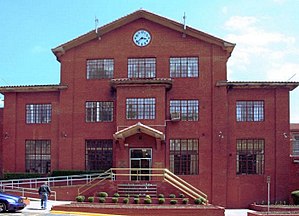“The School to Prison Pipeline” is a disturbing trend found in Deaf Education today. A metaphor coined by the Harvard Civil Rights Project, the “School to Prison Pipeline,” refers to two parallel concepts. For one, youths are being removed from school environments and are sent off campus to alternative schools or incarcerated in juvenile corrections facilities. The second part of the “prison track” or “pipeline” metaphor refers to public attitudes and policies regarding juvenile offenders. Since 1992, approximately 45 states have passed laws that make it easier to try juveniles as adults and have increased penalties for juvenile offenders. In 2000, Black students represented 17% of student population but 34% of those suspended.

Juvenile Girl in Prison PBSNewsHour/YouTube Photo by Richard Ross
In 1998, Black youth with no prior criminal record were 6 times, and Latino youth 3 times, more likely to be incarcerated than White youth for the same offense.
Between 1983 and 1997, four out of five new juveniles detained were minorities.
While we have no hard statistics, because deafness is a low incidence disability, our numbers of deliquent deaf youths are lower. However, we are seeing an increasing numbers of deaf youths who are on probation or who are incarcerated in correctional facilities with little services. Even with the sharp teeth of the ADA, many slip through the cracks especially if they are from poverty backgrounds, have no family support and have not understood or refused to comply with their probation requirements. The two deaf youths that I have interviewed are in state correctional facilities with only interpreters during the school day, not during their treatment or during their leisure hours or in the dormitories or cafeterias. These youths are categorized as violent offenders. The state cannot find a placement for them so they are incarcerated with hearing youths.
This challenge is one that the state and national associations for the deaf as well as the Convention of Educators and Administrators for the Deaf (CEASD) have avoided like the plague for obvious reasons. For one, these youth are embarrassing! But these deaf and education organizations have power. They are the logical place to advocate for Deaf youths caught in the criminal justice system. They have the knowledge and expertise on what constitutes effective communication and how to deliver it with the appropriate mental health treatment for Deaf youths. But instead schools choose expulsion. It is an easy answer and makes our schools “look good and legally compliant.” It also gives the community the appearances of keeping the campuses safe for the other students, faculty and staff. But it is a short-sighted response at best. It does not take into consideration our responsibility as educators to Deaf youths to get them into safe, appropriate and accessible treatment facilities. All Deaf children and youths —the “good, bad and the ugly”—are our responsibility. Too bad we give all the attention to only the good ones, the ones that look like us and act like us.

Boy In Prison Window PBSNewsHour/YouTube Photo by Richard Ross
Related articles
- A Disturbing Trend: Deaf Youth and the School to Prison Pipeline (deafinprison.wordpress.com)
- I Didn’t Hear the Guard (deafinprison.wordpress.com)
- The School to Prison Pipeline Is Even Bigger for the Deaf (deafinprison.wordpress.com)
- Miranda, Hearing Juveniles and Deaf Juvenile Offenders (deafinprison.wordpress.com)
- So, What Do You Need to Know About ASL Name Signs? Workshop by Professor Andrew Byrne (deafinprison.wordpress.com)
- Deaf Awareness Week – Day 3 PetFinder.com (deafinprison.wordpress.com)
- Deaf Awareness Week – Day 4 (deafinprison.wordpress.com)
- Jim Crow: Mississippi’s ‘School to Prison’ Pipeline Targets Black Students (newsone.com)


